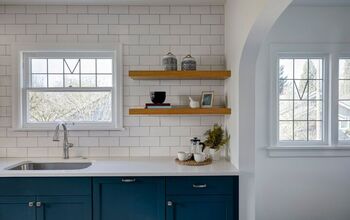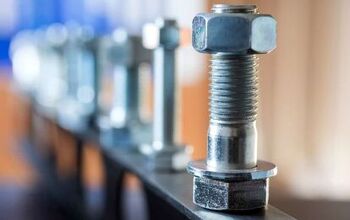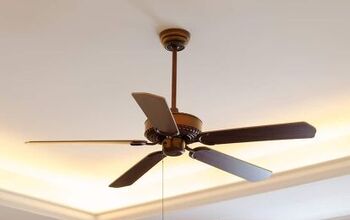How Much Weight Can Kitchen Cabinets Hold? (Find Out Now!)

Staying organized inside the kitchen means making smart use of your surroundings. That’s why you see many homeowners installing shelves and spice racks. They want to maximize all the space available to avoid making a mess in there.
Your kitchen cabinets will also help you stay organized. Those cabinets can be used to store kitchen utensils, pots, pans, and all kinds of other items. But, how much stuff can your kitchen cabinets actually hold?
Homeowners can tell what the weight limit for their kitchen cabinets is by searching for specific certifications. If the cabinets were approved by the Kitchen Cabinets Manufacturers Association, that means they can support up to 600 pounds. Without that seal of approval, pinpointing the weight limit for the cabinets is tougher, but many manufacturers settle at 500 pounds.
Knowing the weight capacity of your kitchen cabinets is important if you want to avoid accidentally damaging them. You can find out more about the capacity of your kitchen cabinets and other relevant topics by continuing with this article.
Do You Need to Hire Cabinet Installers?
Get free, zero-commitment quotes from pro contractors near you.

The Factors That Determine the Weight Capacity of Kitchen Cabinets
Cabinets are essential elements of any kitchen. They are used for storage, organizing, and even as decorative elements. Some homeowners even order custom cabinets to spruce up their kitchen.
It is in your best interests to keep those kitchen cabinets in great condition. Apart from how helpful they are, protecting your kitchen cabinets is also smart because replacing them can be very costly. You may have to spend thousands of dollars to get suitable replacements.
One of the best ways to keep your kitchen cabinets in good condition is to avoid overburdening them. To avoid that potential problem, you need to know how much weight your kitchen cabinets can support. Reading up on the factors we’ve highlighted below should clue you in to the maximum capacity of your kitchen cabinets.
Approval from the Kitchen Cabinet Manufacturers Association
The first thing you must search for when trying to determine the weight limit for your cabinets is a particular seal. The Kitchen Cabinet Manufacturers Association has set its own standards in terms of weight limits for kitchen cabinets. 600 pounds is the weight limit they ultimately decided to set.
The Kitchen Cabinet Manufacturers Association came up with that limit after partnering with the American National Standards Institute. Upon finding their seal on the cabinets, you can be certain that they follow the aforementioned weight limit.
Kitchen cabinets are tested rigorously before they are given that seal. In reality, the cabinets approved by the Kitchen Cabinets Manufacturers Association may actually be capable of supporting a bit more weight. However, you shouldn’t push them that far because they are still susceptible to damage.
Manufacturer-Imposed Weight Limits
So, how can you tell the weight limit for your kitchen cabinets if they weren’t approved by the appropriate association? That’s going to be a bit trickier.
Sets of kitchen cabinets lacking the seal of approval typically have weight limits set by the manufacturers. There is no set-in-stone rule that manufacturers have to follow, but most of them go with 500 pounds. While shopping, look at the label for the kitchen cabinets. You should be able to find the weight limit set by the manufacturers there.
Again, 500 pounds is just what most manufacturers go with. Don’t be surprised if the set you’re looking to buy has a higher or lower weight limit.
Custom Weight Limits
Since you can get your kitchen cabinets custom made, you can also set the weight limits you want. Talk to the people you hired to build the custom cabinets.
Ask if they can set the weight limit according to your preferences. Most of the time, the professionals you hired should be able to set those limits with no issue. They may charge you extra if you want a heavy-duty set of cabinets though.
Building the cabinets yourself also gives you control over what the weight limit will be. That’s a good project to take on if you have the time and resources to spare.
Materials Used
The materials used to build the interior of the cabinets can have an impact on how much weight they can support. Generally speaking, you want the cabinet interiors to be made from plywood.
Plywood is preferred because it’s a bit stronger than particleboard and fiberboard – the two other materials often used for cabinet interiors. Beyond that, plywood is also better for kitchen cabinets because they can be secured better. Holding screws and other fasteners can be tougher for sheets of particleboard and fiberboard.
Cabinet Positioning
Even if the cabinet boxes are strong, they cannot do their job without adequate support. That’s why the positioning of the cabinet in relation to the studs and joists is so important.
The studs and joists should be positioned in such a way that they hold the cabinets secure. If those connections aren’t solid, the cabinets may not be able to support much of anything.
Fasteners Used
The fasteners used to keep the kitchen cabinets in position will also impact their capacity. To get the most out of your kitchen cabinets, you must use the right fasteners and the right amount of them.
Coarse-threaded screws are better for installing kitchen cabinets compared to their fine-threaded counterparts. Use at least four coarse-threaded screws and try to connect them to separate studs to increase the cabinet’s capacity.
As for the hinges, the style you ultimately go with won’t make a big difference. Exposed, concealed, and semi-concealed hinges all work just fine for supporting kitchen cabinets.
You should be more concerned about the condition of the hinges. Keep a close eye on them and be mindful of rust buildup. Lubricating the hinges periodically should also help maintain their performance level.
The Signs That Your Kitchen Cabinets Are Overburdened
Kitchen cabinets can help you store numerous items, but they cannot hold on to everything. Pushing them past their limits can cause real problems. Cabinets asked to work beyond their limits may fall down. As they come crashing down, they could also damage your countertops and kitchen appliances.
You definitely want nothing to do with overburdened kitchen cabinets. Keep an eye out for the telltale signs of overburdened kitchen cabinets detailed below and respond immediately if you notice them.
Bent Cabinet Boxes
Take a close look at the cabinet boxes and see how they are aligned. They should be completely level, but if they’re taking on too much weight, they may start to bend.
The tough thing about this is that it can be hard to spot at first. The warping of the cabinet boxes takes place gradually. If you suspect something is off, use a level if you have one to check the cabinet’s alignment.
Loose Screws
Another side effect of the cabinets being overburdened is that their screws may start to come loose. The enormous amount of pressure placed on the cabinet box may be forcing the screws out of their respective positions.
Do something about the cabinets as soon as you see the screws coming loose. You can try using different fasteners and see if they will hold better.
If that still doesn’t work, using a different material for the cabinets may be necessary. Remember that plywood is better at holding screws compared to particleboard and fiberboard so use that.
Cracks along the Sides of the Cabinets
Cracks may also start to form along the walls of the kitchen cabinets if they’re being asked to support excess weight. The cracks are serious signs of trouble and you need to do something about the cabinets as soon as they appear.
Rotten Wood
This last warning sign may not appear close to the kitchen cabinets right away. Instead, you may notice it while inspecting the roof or the walls in your kitchen.
Parasites or excess moisture could compromise the stability of the wooden studs and joists in the kitchen. The kitchen cabinets are connected to those studs and joints. The cabinets are likely going to fall if you don’t do something about the rotting pieces of wood.
Do You Need to Hire Cabinet Installers?
Get free, zero-commitment quotes from pro contractors near you.

Related Questions
How Do You Maintain the Structural Integrity of the Kitchen Cabinets?
Well-made kitchen cabinets can last for decades inside your home. Unfortunately, that may not happen if you don’t take good care of them. Thankfully, there are some easy ways to keep your kitchen cabinets in great shape.First off, you should be more mindful of where you install them. Installing the cabinets too close to windows can turn out badly. In that position, the cabinets could be exposed to extreme temperatures that weaken them. Moisture coming in from the outside will also affect the wooden cabinets.You should also avoid letting stains sit on the cabinets. Some of those stains can affect the wood if they are ignored. Lastly, if the cabinets get chipped or scratched, you should fix them right away using wood fillers. Those blemishes can grow larger if they’re left alone so fix them as soon as you can.
How Much Weight Can Kitchen Drawers Support?
The slides used in kitchen drawers determine their weight limits. On the lighter side, some drawer slides can only support about 75 to 100 pounds. If you want something with a higher capacity, go for ball-bearing slides because they can support up to 500 pounds.

Gary Evans is passionate about home improvement. He loves finding out how to make improvements in the easiest, most practical, and most affordable ways. Upgrading his home kitchen is one of his ongoing hobbies. Gary is also a long-time content creator and enjoys spending his free time tending to his hydroponic vegetable garden.
More by Gary Evans



























